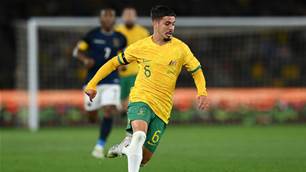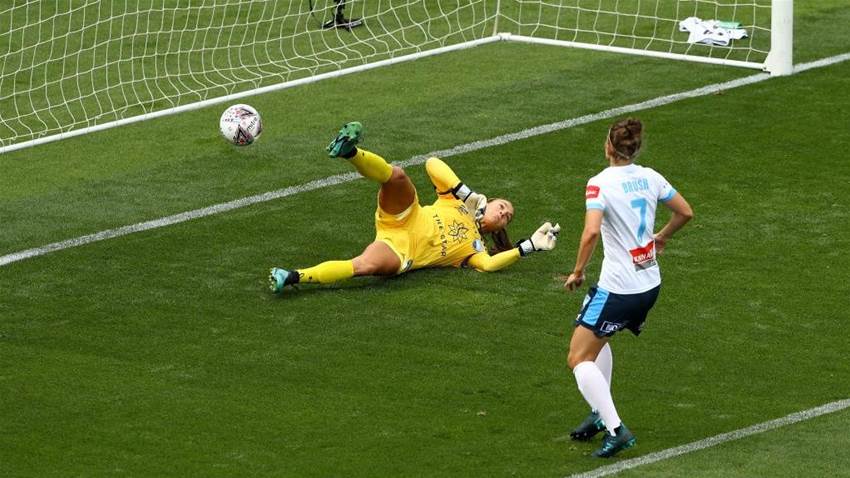The Grand final saw two familiar rivals face off in unfamiliar circumstances.
Taking place took in a near empty AAMI Park with Covid-19 restrictions in place, neither Melbourne City nor Sydney FC let the relative calm of the stadium diminish their intensity on the field.
Melbourne City entered the 2020 Grand Final game with the momentum in their favour. Having not lost a match in the previous 15 games, they last lost to their Sydney FC opponents in 2017.
Neither team is a stranger to the Grand Final, Melbourne City having made it to the last game of the season and won in every year of their existence bar last year. That Grand Final was won by Sydney FC.
This year was Sydney’s sixth Grand Final appearance, the most of any club. Moreover, it was the third time Melbourne City met Sydney FC in a Grand Final with Melbourne winning the two previous clashes.
Both of their team captains, Steph Catley and Alanna Kennedy, were also taking part in their sixth Grand Final.
This collective experience of both teams is not to be overlooked. The ability to continuously make it to the finals demonstrates both clubs’ ability to implement a mind-set that can overcome obstacles and ultimately win.
Each of their dominance has revolved around effective tactics, getting the right players to carry them out and keeping the discipline to realize them. All these components were present in both squad during this Grand Final.
Melbourne City played in a 3-5-2 formation. Anchored by a strong back three, this formation allows for great movement of the ball, the ability to move it wide while having significant passing lanes.
It is effective for teams like City who can command control of the ball reducing the potential defensive vulnerabilities of this formation.
This season this formation has allowed Melbourne to deploy on the wings two of this W-League’s most effective players’, Steph Catley and Ellie Carpenter.
Both have been a crucial part of City’s attacking play this season, providing more crosses than any other players in the W-League for 2019-20.
Sydney FC for their part started with a flexible 4-3-2-1, a formation they have widely used for the last two seasons.
Delivering a good coverage at the back, this formation allows Sydney to press their opponents defensively and provide adequate passing lanes when in possession of the ball to mount various ways to attack.
This pressing game was the tactics Sydney FC used in the Grand Final. FC players closed down their City opponents quickly. Importantly they were initially able to stifle the effectiveness of City wingers Steph Catley and Ellie Carpenter.
Without their wingers’ runs up the side this required City to try pass more centrally to try to move the ball forward. These attempts were more often then not stopped by Sydney’s continual press.
As effective as this strong press was useful for their defensive efforts, it seemed to play against Sydney on the offence.
When they gained control of the ball, Sydney players struggled to be able to link up to start a convincing offensive effort of their own. Melbourne were often able to retrieve possession and start building forward again.
The deadlock was broken in the 15’ minute when Catley was able to move the ball forward and saw her cross into the box mishandled by Sydney FC keeper Aubrey Bledsoe. The mistake ended with the ball bouncing into back of the net.
The remainder of the game continued as it started. While it did see Sydney FC’s initial intensity fade a bit, the tactics applied did not change until the last few minutes of the game when Sydney resurged and tried anything to move the ball forward to score.
A scrappy and at times physical game, the game was largely controlled by Melbourne with Sydney opponents shutting down City players quickly. Sydney’s lack of ability to play the ball forward when they had the ball continued with lackluster offensive attempts.
Sydney had one good chance at the beginning of the second half. The shot on goal was stopped by City keeper Lydia Williams with Ellie Carpenter ultimately clearing the ball.
For most part City continued to dictate the game. Their mixture of great international talent, good tactical use of their players and the ability to control the ball throughout the game made it difficult for Sydney, like all other opponents this year, to break through.
With four Grand Final wins in their five years of existence, City has turned itself into the most successful W-League club in the league’s history. With some of the best facilities in Australia, City’s ability to attract top players is surely going to continue to help that dominance.
The steady exodus of players from the W-League to foreign leagues may hurt them, although arguably not as much as other clubs.
There is still plenty of talent left here in Australia. However, if any in the future will compete with this City dominance in the upcoming years has yet to be seen.
Related Articles

Tilio eyes A-League return in bid to escape Celtic rut

Leckie seals new marquee deal as Good, Maclaren head to Asia













